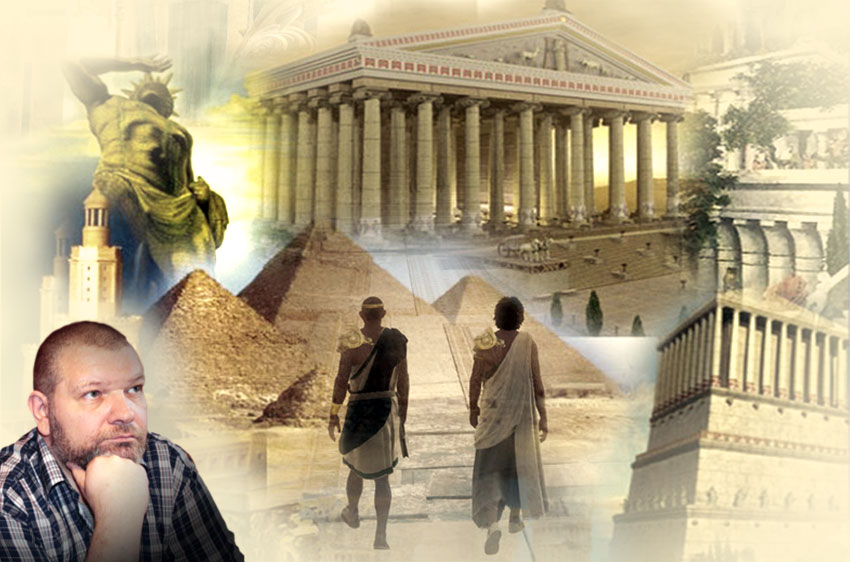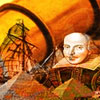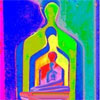Past Life Influences ~ Part III
 by Nancy C. Pohle & Ellen L. Selover
by Nancy C. Pohle & Ellen L. Selover
The following story provides an intriguing and complex illustration of many of the elements of past life memories, influences, and inclinations which have been discussed. It emphasizes the notion that the information becomes available as we have need of it and as we can apply it practically in our lives. Recognizing the source of strong emotional impulses and discovering relationships and karmic patterns that have traversed the limits of time are all part of this experience.
Lisette’s experience spans ten years, from her first spontaneous insight to the reconciliation of deep emotional pain and release of limiting beliefs. It began as an intuitive flashback so emotionally charged that she decided to seek additional guidance through meditation, dreams, past life regressions, and even a professional psychic. Over time, enough clues emerged that Lisette was able to formulate a clear message that she could apply to her life in helpful ways.
“I was sent to Hong Kong on business and during my free time decided to take a tour of an old Chinese village. It was after the village tour that some remarkable events occurred.
“As I wandered around the village on my own, I noticed a small pathway leading to a quaint little museum . . . It was dedicated to all the Chinese emperors from way back, depicting how they dressed in their respective eras and displaying all the accouterments that were important to each. They might be surrounded by replicas of whomever or whatever was significant to them, such as an image of their wife, a favorite animal, a concubine, the high priest, emblems and furnishings . . . One emperor’s display piqued my interest especially, because his statue was sitting in Buddha fashion on the floor, very plainly, with nothing else around him—a real departure from the others. I was fascinated to read his descriptive plaque, which said that he was the only emperor who had decided not to allow China to be ruled by his only son, but rather by his prime minister, the man who most deserved to rule.
“The flash happened as I read the plaque and thought, ‘Oh yeah, that soul was also Jean Jacques Rousseau, the father of the French Revolution.’ His philosophy was against the divine right of kings, and his writings were instrumental in prompting the whole mentality change that came about during that revolutionary era.
“The next thing I knew, as I looked over my right shoulder, I could see long, dirty brown hair flickering . . . I suddenly felt that it was my hair, my body, and I was very uncomfortable being so unclean . . . As I looked at the scene around me, I realized I was on a cart with hay at my feet . . . and instinctively knew that this was eighteenth-century France . . . I noticed people in the street around me whom I recognized as a part of my current lifetime.
“I was an aristocrat being paraded through the streets as an example to others. Although I wasn’t guillotined, I was imprisoned for not giving in to the senseless accusations of the mob that arrested me. I felt totally alone and abandoned, because no one came to my aid—not my parents, not my husband, not even a friend. Abandonment is an issue I have wrestled with repeatedly in this current lifetime. My failure then to comply with what I perceived as the hypocritical demands of my accusers and refusal to maintain the status quo infuriated my husband. He refused to take me back when I was eventually released from prison. My parents felt it was unwise for me to stay in Paris with them, so they helped pay for me to go to England and ultimately to emigrate to post-Revolutionary America.”
Lisette also explained that she always had a tremendous aversion toward anything French in this lifetime, but never understood why. Paradoxically, she was born to French parents in a part of New England where the French language predominated in daily life. She didn’t even learn to speak English until she was four years old. After experiencing the memory of her former life in France, Lisette could finally understand why she had such negative emotions connected with it.
Her story has a happy ending on several counts. As a result of working with this past life information, Lisette finally had a reckoning with the emotional and spiritual issues related to the French incarnation.
“While still processing these concerns, I was laid off from my job and subsequently hired by another large corporation. Ironically, the reason they hired me was because I could speak French. The company sent me to France, gave me refresher classes during the day, and treated me extremely well . . .
“During my stay in Paris, I experienced an apprehension about visiting the two islands in the middle of the city, particularly the Ile de la Cite. I discovered why, when I walked down a particular block and couldn’t go a step farther. I asked my friend Linda to go ahead around the corner as I described to her exactly what she would see . . . It was La Conciergerie, the prison used during the French Revolution after the destruction of the Bastille.”
Lisette was flooded with emotion as she looked at her former place of imprisonment, confirming the accuracy of the past life memory with her own precise description of the entire compound and chapel.
As a result of these experiences, Lisette came to terms with her lifelong feeling of being inadequately nurtured by her parents. She explains: “I had just moved and, during my parents’ first visit, came down with a terrible cold. When they arrived, I had so much congestion that laryngitis set in and I could barely talk. I told them it would be unfair to spend the day with them as we had planned, because I was so ill. Later that night, after being alone all day, I started to feel very uncared for because they didn’t call to see how I felt. The next day, there was still no word from them. Finally, feeling very desolate and hurt, I slammed down the book I was reading and said, ‘Look at this, nobody cares.’ And all of a sudden I had a flashback to that feeling in France . . . and I said, ‘Oh, my goodness, I recreated the exact same family situation to get this feeling.’ I couldn’t believe how vivid the realization of it was.
“The repetition of this experience allowed me to clearly see the deep psychological belief I held that nobody cared. And my karma with France seemed to be totally broken since that company treated me with such respect.”
This encounter with a very pertinent past life had a transformational effect on Lisette’s current life. She related what she felt were the most valuable lessons learned:
“I now have an understanding of karmic patterns. I had mistakenly thought that it meant I had done someone wrong and had to right it. Or that they had wronged me and had to right it. Suddenly I realized that what is meant by patterns is ‘belief patterns.’ I held the belief system that I hated everything French. The hatred of anything has no place in heaven . . . and I decided I wanted to release that emotion and the deep soul belief that nobody cared . . . Recognizing it for what it was . . . gave me my parents back. Now I understand that the role they played enabled me to recognize my pattern of feeling abandoned and brought about a sense of instant forgiveness . . . Breaking that awful belief . . . was a real gift.”
Applying Past Life Insights In Present Day Circumstances
One way of understanding the spiritual work of integrating past life information is a formula which Carolyn Gelone describes as “reveal, release, reprogram, result.” Once the information has been revealed and accepted into our consciousness, we can discern changes we might choose to make. As we understand the need for transformation, we can reprogram our thoughts or emotions to bring about that change.
When we commit to a change in attitude, an increase in compassion, or a release from a limiting belief, we strengthen our endeavor on the spiritual path. It isn’t enough to simply remember previous life encounters—the application of the insights is crucial to creating a new, more positive outcome.
An important element to be aware of when applying past life influences is the integration of the memory on a heart level. Having an intellectual understanding and trying to simply change one’s thought patterns is not sufficient to bring about true healing. A heartfelt connection evokes a genuine release and change of emotion.
Sometimes the practical application happens immediately, with little effort on our part. It is as if the knowledge of a past life influence creates a shift in our consciousness, a tremendous “Aha!” that heralds an immediate release from negative emotions or limiting thoughts. At other times, the information directs us to the next step in the process of our spiritual work. This is the reprogramming stage. It usually involves making the leap from mere learning to true understanding and incorporating that new knowledge into the fabric of our being, thus strengthening and supporting our spiritual growth.
Working intuitively with past life memories can be extremely rewarding, but it can also be a painful process. It is wise to be prepared for learning things about ourselves that may not be glamorous or flattering to our egos. That is why desire and intention to grow spiritually are key to reaping the benefits of the beauty and grace inherent in reincarnation.
The following are suggestions for how you can work with the information gleaned from past life examination to help bring about a transformation result. Remember that changes can come about simply as a result of the desire for change, or they might require consistent, persistent attention over time. And, as with all spiritual and personal growth, the only person we can truly change is our self.
* Develop an affirmation to change a thought or belief pattern. Because past life memories are a combination of emotions and thoughts, when we choose to change one aspect, it can positively affect another. Affirmations should be stated in positive terms and can be repeated before meditation or at bedtime. Cayce indicated that using affirmations just before sleep would plant a seed in the unconscious, thereby helping to create positive change in the waking state. He called these affirmations “pre-sleep suggestions”.
* Make a conscious change in your actions or perceptions. Sometimes choosing to act or respond differently is all we need to do to create positive change. By engaging our free will, which Cayce called the “motivating force of the soul”, we can release ourselves from karmic patterns and inertia and put that energy into motion, rather than remaining trapped in a holding pattern.
* Find ways to bring into this life positive aspects from previous life experiences. As we discussed the treasures we’ve gained in past experiences, we can choose to bring them into our conscious awareness. These treasures might include any of our creative talents or inclinations—a love of the outdoors, the ability to harmonize with others, a sense of adventure, and so on. By drawing on these evolving elements of who we are, we can strengthen our understanding of and connection to our higher selves.
Excerpt Of A Life Reading From Edgar Cayce
The following life reading was given to a thirty-three year old man on April 27, 1943. It examines the events of several past lives, then illustrates the influence of those experiences on present inclinations, interests, and talents. Cayce suggests to the recipient that he seek out the knowledge he gained in previous experiences and use it to understand his personal relationship with the universal forces:
Before this the entity was in the land of the present nativity, during the early settlings . . . on the island off the coast of Carolina . . .
The entity then in its activities became closely associated with the medicine men of those periods, and was acquainted with . . . one Powhatan . . .
Hence the entity’s interest in healing, in the outdoors, in music . . . These abilities are manifested in the present in varied ways or manners . . .
Before that (there were others, but this we will give) the entity was in the Holy Land. We give this because it presents the urge that comes from those activities, in the abilities for detail work.
There the entity was in those groups that were not wholly of the Roman, not wholly of the Palestine land, and yet . . . working with both factions—which caused some confusion.
Yet the entity in that experience gained much. For the entity then was a bridge builder, as might be termed today, or a pioneer in the ways and means for transportation . . . being among the first in that particular period to build with timber.
Thus wood, types of wood have a particular interest; those things having to do with physics, and building—as engineering and activities of such natures . . .
In that experience, judged from man’s judgment, the entity was a material success. Judged by his own experience, of not being satisfied—a failure—though the entity gained much through that period . . .
Before that the entity was in the Persian and Arabian land . . . For, the entity conducted a caravan that journeyed from the land of the hills, or from India, to Egypt—and passed through that area of the “city in the hills and the plains”.
Thus the trades, the promptings and urges in individuals for adornment, as well as amusement, arise from those applications of the entity’s abilities through that particular sojourn . . .
The entity gained throughout that period. For, the entity eventually established in the “city in the hills” a center, or a trading post, where those influences from the teacher Uhjltd brought an unfoldment to the entity—the consciousness that what is the better for all is the better for the individual, or the universal consciousness . . .
Then, in attaining . . . the outlet for thy abilities:
Choose that most in keeping with thy purposes, thy aims, thy desires. Are thy desires and thy purposes ideal, in thine own consciousness? What is thy ideal, spiritually? . . .
Thus may ye come to know thyself and thy relationship to thy Creative Forces . . . the manner in which ye treat thy brother is the manner in which thy growth is attained.
As a merchant, as a tradesman, or as the engineer, ye may find the outlet for thy greater abilities. # 2981-1
Conclusion
The focus here has been on recognizing and understanding the influence of past life experiences in our current life circumstances. But the real essence of the message here is that we can use this understanding to make our lives better, more joyous, more whole, and less encumbered by unnoticed or misunderstood belief patterns. Ultimately, once we’ve used a little detective work to better understand our inner selves, we free up our energy to be of greater service to others. By allowing this information to come into our consciousness, and then using it in positive ways, we draw closer to those with whom we share our present earthly sojourn, and to the Source of Life itself.
Excerpt from Awakening The Real You
Posted in Other Topics, Past Life Therapy, Reincarnationwith comments disabled.





